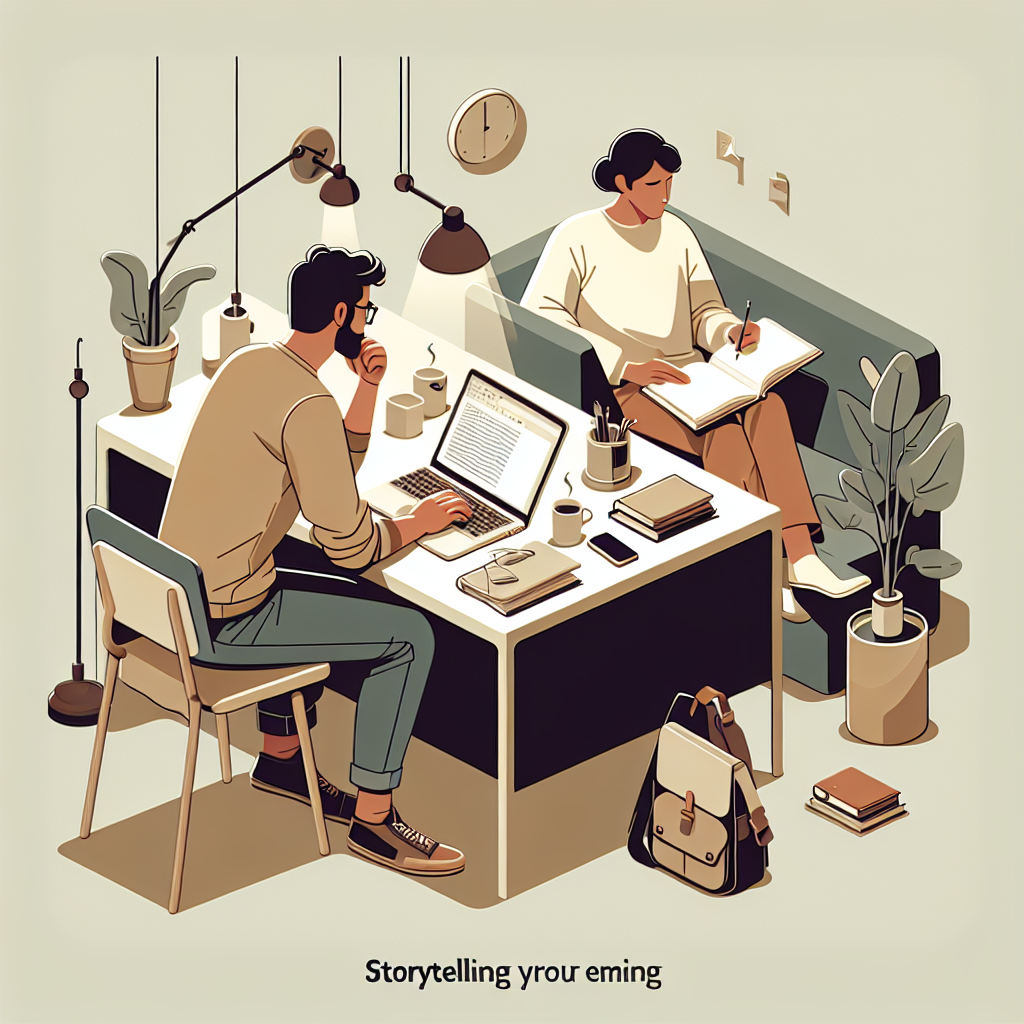Course Content Creation, Course Planning, Course Platform & Tech, Course Pricing & Sales, Launching Your Course
How to Balance Storytelling and Pitching in Email Content
Storytelling in emails isn’t just about nice words; it’s a strategic tool to boost engagement and foster genuine connections with your audience. While good stories can make your emails unforgettable, certain common mistakes can sabotage your efforts. Here are ten essential mistakes to avoid to ensure your email storytelling hits the mark.
Overloading Emails with Stories
When it comes to email storytelling tips, balance is key. While it might be tempting to cram your emails with vivid narratives, restraint can often lead to a more focused and impactful message. Overloading your emails with stories can leave your audience feeling overwhelmed and distracted.
Think about movies that are two hours long with no focal point—you tune out, right? Balancing emails and pitches entails crafting a narrative that supports your message succinctly. Your storytelling should act as a supporting cast, not the entire production.
To avoid this, ensure each story has a clear purpose, tying directly to the email’s call-to-action or primary message. This approach not only sharpens your storytelling edge but also keeps your audience engaged.
Losing Sight of Your Audience
Successful email storytelling requires a deep understanding of your target audience. Imagine telling a fairytale to a room full of scientists—it probably won’t resonate. Similarly, crafting emails with stories that don’t align with your readers’ interests or pain points is ineffective.
Instead, focus on knowing your audience’s desires and pain points. Are they looking for solutions, inspiration, or entertainment? Telling stories in business emails should aim to address these specifics rather than generalities, providing your reader with a personalized experience.
Gathering data through surveys or engaging directly with your audience can shed light on what they truly value. Armed with this knowledge, you’ll be better equipped to ensure your storytelling resonates, making your emails relatable and memorable.
Forgetting the Call-to-Action
Impactful storytelling in emails shouldn’t leave your readers at a dead end. A storytelling email without a strong call-to-action (CTA) is like telling a joke and skipping the punchline; it leaves your audience hanging.
Always provide a logical next step for your readers within the narrative. Whether you’re pitching with storytelling or merely informing, your CTA bridges their emotional response to the tangible action you want them to take.
Just as important as crafting a good story is crafting a clear, compelling CTA that encourages your audience to engage further. Remember, email storytelling is not just about the mind; it’s about sparking action.
Being Too Generic
Email storytelling tips often stress the importance of keeping the narrative fresh and unique. Creating email content that’s generic or uninspired fails to stand out. Instead of relying on clichés or overused plot lines, opt for originality that mirrors your unique brand identity or message.
Story-driven email content should reflect authenticity and creativity. Share surprising insights, a personal story, or an unexpected twist. Whether crafting an email for an audience that loves adventures, or professionals inspired by understated brilliance, your emails should pitch and tell stories that capture their interest uniquely.
Avoiding generic content is vital to ensuring that your storytelling doesn’t fade into the background noise of your subscribers’ inboxes.
Ignoring Emotion in Your Stories
While crafting emails with stories, there’s nothing more potent than connecting emotionally with your audience. Overlooking the emotional impact of storytelling leads to disconnection and disengagement.
Your narrative should inspire emotion, evoke empathy, or spark excitement. Whether joyous or somber, the emotional undercurrent of the stories you tell in emails should be masterfully curated with your readers’ emotional landscape in mind.
Emotional storytelling is an art that bridges your audience from passive readers to active participants. Capturing this requires an understanding of your readers’ emotional triggers and weaving them naturally through your narratives.
Lack of Structure in Storytelling
Another common pitfall in email storytelling is a lack of structure. A rambling or incoherent narrative doesn’t just frustrate readers; it derails your message.
Email storytelling that engages should follow a clear structure with a beginning, middle, and end. Start by setting up a relatable problem, describe the journey to a solution, and conclude with a resolution, ideally leading into your CTA.
Structuring your stories not only makes them easier to follow but also enhances their impact, making your emails powerful tools for connection and conversion.
Frequently Asked Questions About Storytelling in Emails
Q: Why is storytelling important in emails?
A: Storytelling in emails is vital because it captures the reader’s attention and enhances engagement by providing relatable contexts that motivate action.
Q: How do I balance stories and promotional content in emails?
A: Balance through thoughtful integration, ensuring stories naturally lead into your promotional content or calls-to-action, keeping them relevant and engaging.
Q: Can storytelling improve email open rates?
A: Yes, compelling storytelling can improve open rates by increasing anticipation and interest in the subject lines and content, although other factors also play a role.
Want to build a high-quality email list that drives real growth for your business? Check out our List Building Articles.
If you’re serious about automating and growing your business, check out the exact Automated Marketing System that Ty Cohen uses to save time, generate leads, and build momentum. Get instant access here.
Need help building your digital business? Get direct help from Ty Cohen here.

